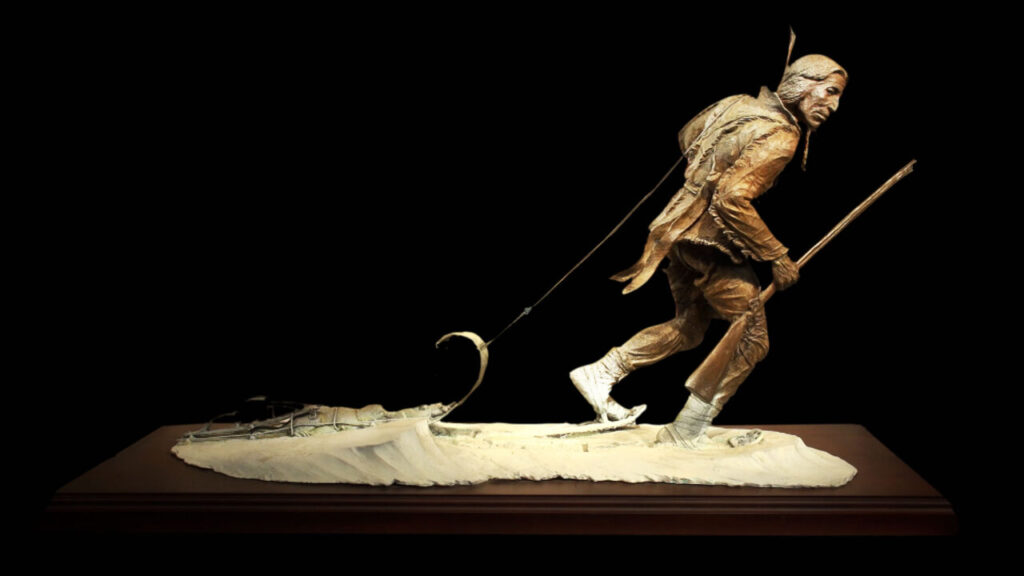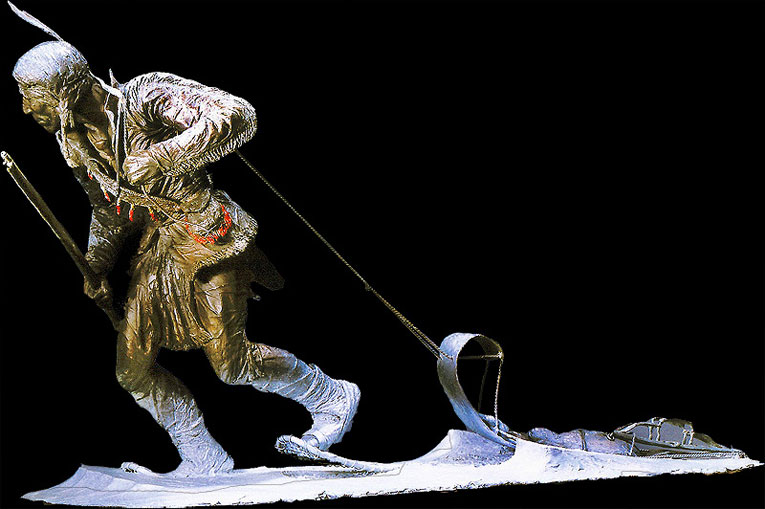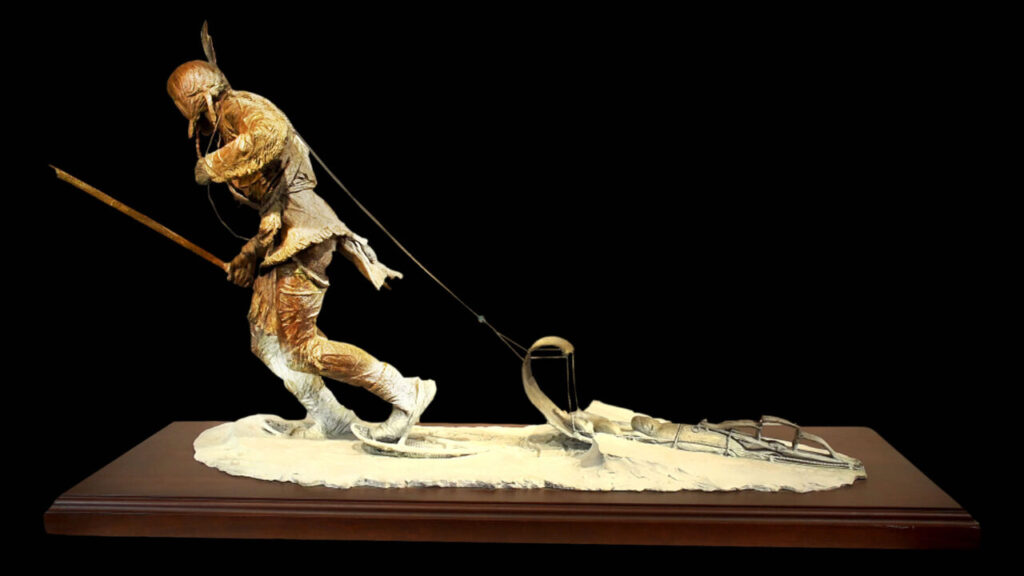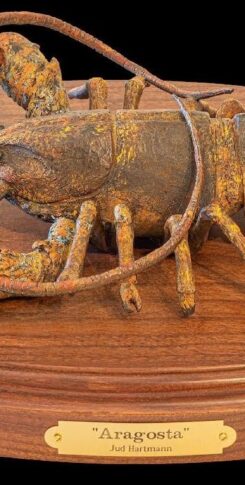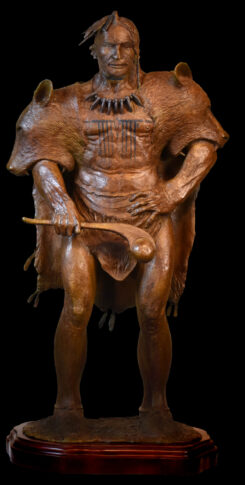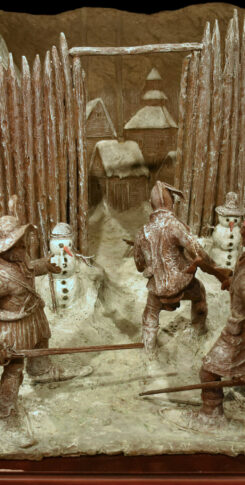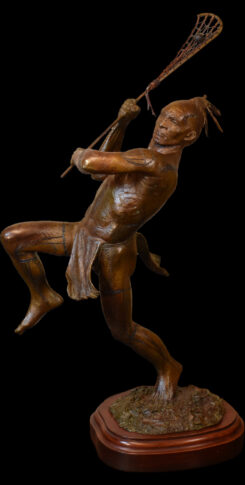Bronze edition: 20 | Height: 23″ | Length: 43″
“These Indians lead a very singular life. At one time of the year they live on a very small store of corn, beans and melons which they have planted; during another period, or about this time, their food is fish, without bread or any other meat; and another season they eat nothing but game such as stags, roes, beavers, etc. which they shoot in woods and rivers. They, however, enjoy long life, perfect health and are more able to undergo hardships than other people. They sing and dance, are joyful and always content and would not for a great deal exchange their manner of life for that which is preferred in Europe.”
Peter Kalm, 1749
The Penobscots, like other northern peoples, set out in early winter tracking the fur-bearing animals in the fresh snow. Though beaver was the most sought after fur, other animals taken included: otter, mink, marten, fisher and ermine. The seasonal migration and semi-nomadic lifestyle of the Algonkian speaking peoples, such as the Penobscot and other Abenakis of Northern New England, as well as the indigenous trade network already in place, allowed for the easy establishment of the European fur trade into early 18th century America.
Using the native technologies of snowshoes and toboggans fashioned from cedar wood, the Indian trappers’ success was enhanced by European manufactured flintlock muskets and iron beaver traps. After a month or more hunters would return with pelts. Once back in their winter camps, native woman would clean and preserve the pelts, and with some wear, the skins became softer and more valuable. During the summer the furs were then gathered together to be traded at French, Dutch or English outposts such as the French fort of Pentagoet (now Castine, Maine) at the mouth of the Penobscot river.
The fur trade was a double-edged sword for native peoples. On the one hand, by supplying a wealth of new and highly prized materials such as hatchets, knives, awls, cooking pots, wool cloth, scissors, hoes, etc., the burdens of everyday life were eased and there occurred a flowering of decorative and ceremonial arts. On the other hand, the greater interaction with Europeans that the fur trade made inevitable, increased the likelihood of exposure to devastating diseases to which native people had little or no immunity. Additionally, material goods which at first were received as novelties and luxuries, soon displaced native equivalents and became necessities on which the Indians increasingly became dependent.
Moreover, to the west of the Penobscots, as a response to the growing importance of the fur trade, a power was rising which would totally transform the political and social makeup of the northeast woodlands. This was the Iroquois Confederacy. By 1640, having depleted beaver populations in their own territory, and being well supplied with firearms by their trading partners, the Dutch, the Iroquois were poised to erupt out of what is now New York State. Launching a series of wars known as the beaver wars or the wars of the Iroquois, their goal was at first to divert and then ultimately to take control of the entire fur trade. They initially subdued the Mohican and then the Algonquin. The Huron, primary trading partners of the French, were destroyed in 1649. In quick succession the Petun or Tobacco Nation, the Nuetral, the Erie and the Susquehannock all fell to the wrath of the Iroquois. The Iroquois now called themselves “ongue-onwhe,” that is “men surpassing all other men,” and by the close of the 17th century they were effectively in control of an area stretching from the coast of Maine to the Mississippi and from Hudson’s Bay to Northern Alabama. The balance of power in the wars for colonial supremacy, were forever altered in favor of the Iroquois and their ultimate European trading partners, the English.
Something as seemingly isolated and innocuous, as the trapping of beaver on a winter day on the upper Penobscot in the late 17th century (and countless repetitions of this act all across the Northeastern part of the continent) would, overtime, help to totally transform the world of the Indian and their singular way of life.

